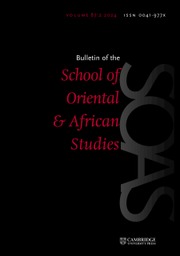Article contents
Tigre Syntax and Semitic Ethiopian
Published online by Cambridge University Press: 24 December 2009
Extract
It has long been argued that the peculiar syntactic traits which typify the modern Semitic Ethiopian languages can be accounted for by the Cushitic substratum, notably the word order of the sentence and the system of qualification (the qualifier-qualified order of elements). It has been suggested that among these languages Tigre is ‘more Semitic’ since (a) it is much less rigid as regards word order, and (b) ‘it may optionally have either the Semitic pattern or the Cushitic one’. A parallel diachronic statement would be that as regards its syntax Tigre was more successful in resisting Cushitic influence or, for some reason, less exposed to it. Here, to avoid the problem of measuring the syntactic features of Tigre in general Semitic terms, Gə'əaz is usually taken as the mode for a Semitic language. In this respect it follows that descriptively Tigre is more Gə'əz-like than the other modern Semitic Ethiopian languages. In spite of the plausibility of such an explanation, it seems to be a matter of scholarly tradition rather than the result of thorough investigation, i.e. the belief that Tigre is the odd man out among its modern relations by virtue of its syntax is an impression rather than a proven observation.
Information
- Type
- Articles Notes and Communications
- Information
- Copyright
- Copyright © School of Oriental and African Studies 1980
References
References and Abbreviations
- 3
- Cited by

